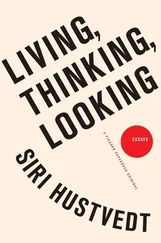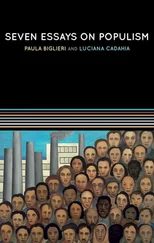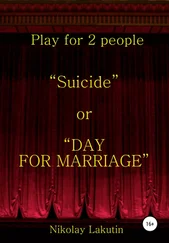As a young man Dickens studied shorthand. He called the cryptic squiggles of this new alphabet “the most despotic characters I have ever known.”
The changes that were wrung upon dots which in such a position meant such a thing and in such another position meant something entirely different; the wonderful vagaries that were played by circles; the unaccountable consequences that resulted from marks like flies’ legs, the tremendous effect of a curve in the wrong place, not only troubled my waking hours but reappeared before me in my sleep.
I have a similar relation to numbers. Algebra, in particular, remains impenetrable to me. Many people can remember struggling in school under the weight of some unfamiliar set of hieroglyphs they were supposed to master and being threatened with failure if they didn’t. Children are expected to digest all sorts of arbitrary systems, and the demands from on high can be crushing. Despite the fact that he fathered ten children, Dickens, the writer, never gave up his position as a child. He identified with children and with the child-like — those who are not in power and who suffer under the fickle and often sadistic demands of those who are. The list of brutalized children in Dickens is so long that I could fill up pages with their names. But unlike Nicholas Nickleby or David Copperfield, where the miseries of having learning beaten into you by a cruel schoolmaster or stepfather are played out fully and poignantly in the stories of particular characters, Our Mutual Friend addresses the abstract nature of paternal authority itself.
The dead father, the missing father, the estranged father, and just the distant father are all figures of loss that reverberate deeply in life and in literature. Fathers are essentially different from mothers because we were all once in our mother’s bodies, are born out of those bodies, and as infants take food from them. Paternity is more distant and less direct than maternity; it’s a claim we accept as children, one inscribed in our legitimate, that is, legal, names. In Our Mutual Friend, a number of fathers never appear in the flesh— their bodies are out of the story. Like the letters and names that float in “society,” the paternal figures in the book are also figures of the paternal —more despotic characters that children find indecipherable, difficult to understand or speak to. They appear as signs or images of the law that can’t be addressed directly, because the person they refer to is either deaf to others or missing altogether. As a description of the law, this makes good sense. In societies that aren’t absolute monarchies or dictatorships, the law doesn’t reside in the body of a living person. It is written —inscribed in documents that proclaim rules, which carry the threat of punishment when broken.
Dickens’s patriarchy — Lords, MPs, judges, and fathers— are by and large an inscrutable group. Some of them exist only as paper or letters. Harmon Senior, dead before the book begins, speaks through the multiple “last testaments” and codicils he hid around his property, each one dispensing his money in a different way. There is no final will, no coherent word, just contradictory edicts. Eugene Wrayburns father appears only as an acronym, M.R.F. (Most Respected Father). In the imaginary arguments Eugene conducts with M.R.F., the internalized father crushes the son with his blanket prohibitions. Another character, Twemlow, has a father figure as well, the tyrannical Lord Snigsworth, from whom Veneering solicits a name only. Like M.R.F., Snigsworth never appears bodily in the narrative. He is only represented by a portrait that hangs on the wall. What we do know is that when Twemlow visits Snigsworthy Park, he is put under “a kind of martial law.”
All written language has a ghostly aspect — the disembodied voice speaking to you from the page — but Dickens’s paternal signs are also oppressive, fickle, and drained of meaning. When the fathers speak, they use the language of a mad king on a distant mountaintop issuing directives that merely confuse the poor subjects below who are expected to act on them. There is no dialogue with the fathers — the talk runs only one way. It’s easy to understand why Kafka admired Dickens so much. K.’s peregrinations through alien corridors inhabited by dirty bureaucrats and invisible authorities resonate strongly with Dickens’s bewildered children trying to locate and interpret the mysterious despotic signs hurled down at them from above. These are the words of dead languages that disguise rather then delineate reality. When Podsnap is told that six people have starved to death in London, the bourgeois patriarch makes the familiar argument that they deserved it. Twemlow, modest spokesman for the child’s position, objects. Podsnap swiftly accuses his guest of “Centralization.” Twemlow manages to reply that “he was certainly more staggered by these terrible events than he was by names, of howsoever many syllables.” Centralization is a word like freedom. In the mouths of politicians, bureaucrats, and ideologues, it is used to disguise the dead bodies that lie beneath it and the particular human stories that belong to each of those lost lives. At its worst, this language is only noise. The twentieth century and the new century we have now entered provide us with countless examples of ideological terms used to hide and distort the politics of neglect and murder.
When Dickens was writing Our Mutual Friend, he was also giving readings, performances his family and friends thought strained him to the breaking point and probably hastened his death. Over and over, Dickens performed what he and those close to him simply referred to as “the murder”: Bill Sikes’s murder of Nancy from Oliver Twist. “There was a fixed expression of horror of me all over the theater,” Dickens wrote, “that couldn’t have been surpassed if I had been going to be hanged.” This was a period of disillusionment in Dickens’s life, of sadness and a nagging emptiness. “What was there but the fearful stimulus of the readings,” his biographer Edgar Johnson writes, “and returning to them as Jasper in The Mystery of Edwin Drood would return to the dangerous excitement of his drugged visions.” The readings became a kind of opiate for Dickens, and as he performed he worked himself into a feverish trance of high emotion. Ladies fainted, men gasped, and when it was over the author would limp off the stage exhausted, tears streaming down his face. He played all the parts, Fagin, Sikes, and Nancy. As Nancy, he begged and screamed for his life; as Sikes, he mercilessly clubbed his victim to death. Writing novels means being plural, being divided among your creatures and suffering with them. While he was onstage, Dickens lost himself in his characters and the horror of what he was reading, and by all accounts it took a terrible toll on his health. In his biography, Peter Ackroyd notes that early in 1869 the author reported that he was “at present nightly murdered by Mr. W. Sikes” and around the same time also wrote in a letter to a friend, “I am murdering Nancy …. I have a vague sensation of being ‘wanted’ when I walk the streets.” Dickens’s use of the first person is significant, if only because it demonstrates that these two beings were close enough to him to be “I.”
Dickens continually explored extreme states of disintegration, and in Our Mutual Friend he created a character, Bradley Headstone, whose breakdown is in part presented as pathological repetition — the machine-like churning in his mind of an attempted murder. The connection to Dickens’s own performances is striking. While Dickens’s fictional character Headstone is guilty of a crime, and his creator was guilty only of invention and empathy for those inventions, Headstone nevertheless repeats the crime in his imagination long after it is over, just as Dickens couldn’t resist performing his murder again and again. A powerfully imagined event can evoke the same emotions as a real event. Few artists would contradict this, and yet there are no doubt people who would find it odd that a fiction, when fully imagined, can create something parallel to the disruptions of mental illness. Dissolution in art is preferable to dissolution in madness, but what Freud called “sublimation” is the transformation of inner dramas, fears, and wounds into something else: a work of art outside the body of the artist. This is true for all arts except acting, in which the body is the instrument for transformation. There are parts of my books that I have never read aloud and never will — they are simply too painful for me. I resist embodying my own words and characters and prefer to keep them at a safe distance on the page. Dickens had long been reluctant to perform “the murder,” but once he had witnessed the horrifled response of his friends on whom he tried out his “reading,” their shocked faces became the impetus for repetition. Bradley Headstone, the mad schoolmaster and criminal in Our Mutual Friend, is not a stand-in for Charles Dickens. I am suggesting something quite different: Dickens’s reading obsession provides a window into the writer’s personality and his plural and complex inner identifications — ones that included both Iam being murdered and Iam murdering.
Читать дальше












